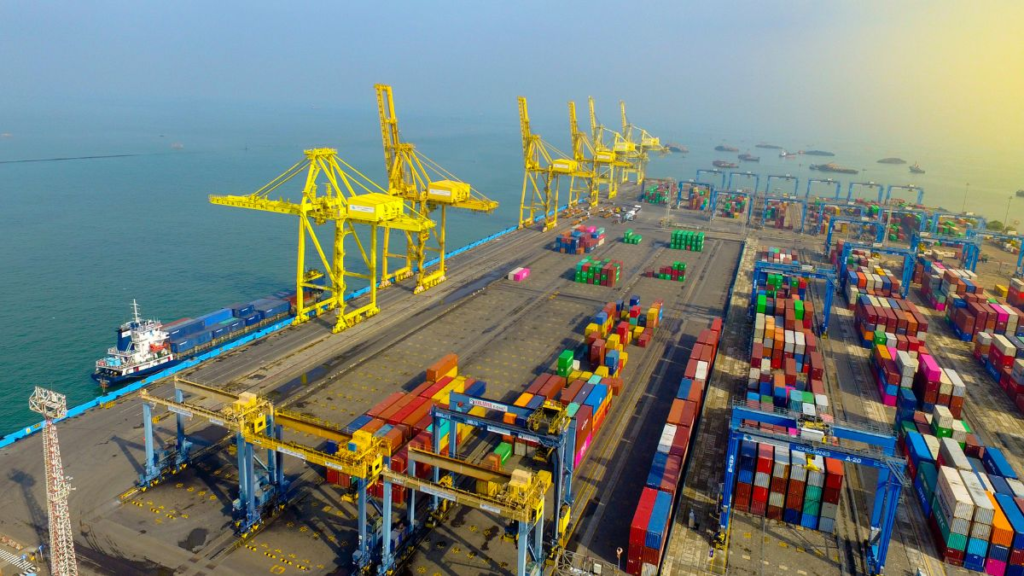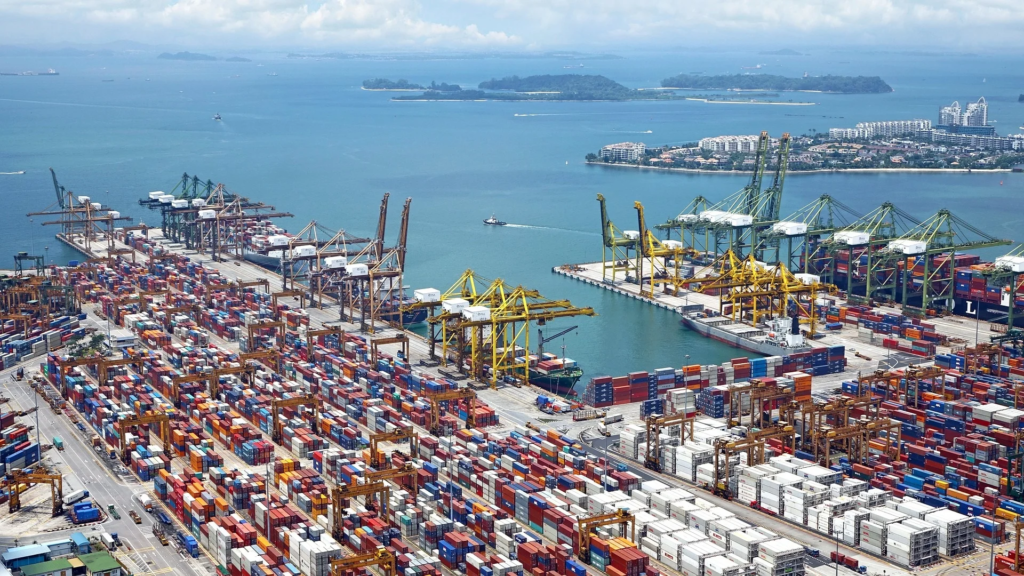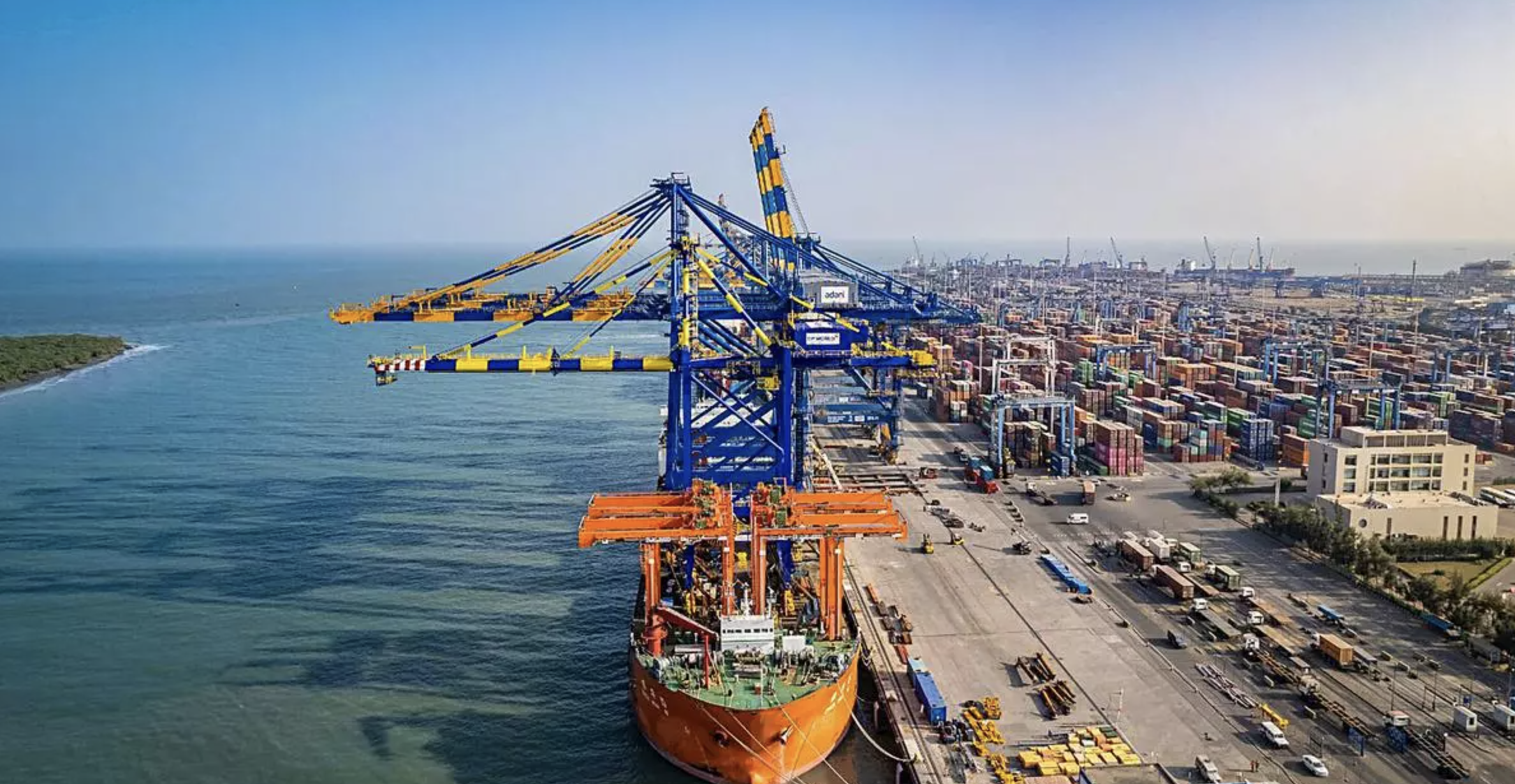Kandla Port is set to become India’s first mega port by 2030, marking a major milestone in the country’s maritime infrastructure development.
As part of an ambitious expansion plan, Kandla Port, officially known as Deendayal Port, is poised to significantly increase its cargo handling capacity, transforming it into one of the largest ports in the country.
With plans to double its current capacity to 267 million tonnes by 2030, this development is set to position Kandla Port as a key player in India’s shipping and logistics sector.
The transformation of Kandla Port is aligned with the Indian government’s broader goal of enhancing its maritime capabilities under the Amrit Kaal Vision 2047.
Read : Paro Airport of Bhutan Where Only 50 Pilots Are Certified to Land Worldwide
This vision aims to make India a global hub for trade and logistics, with its ports playing a central role in facilitating increased cargo movement.
Read : Cityscapes of Opulence: Unveiling the Top 10 Wealthiest Cities Globally
With the planned expansion, Kandla Port is expected to be a critical part of this vision, offering enhanced facilities and services to support India’s growing trade.
Expansion Plans for Kandla Port
The Deendayal Port Authority has proposed a significant investment of over Rs 20,000 crore to build a new satellite port between Tuna-Tekra and Kandla Creek, which will further increase the port’s capacity.

The Deputy Chairman of Deendayal Port Authority, Nandeesh Shukla, has confirmed that the proposal is currently in its early stages. The plan envisions constructing a satellite port to support the growing cargo demands and optimize the operational efficiency of Kandla Port.
The proposed satellite port is designed to complement the existing infrastructure, with a focus on improving the port’s ability to handle bulk cargo.
This will be Kandla’s second satellite port, and the project aims to create a more comprehensive cargo handling system that caters to the growing needs of northern India. The satellite port will also support the bulk cargo terminal operated by Adani Ports and Special Economic Zone Ltd at Tuna-Tekra.
In addition, Dubai-based DP World is investing in the construction of a 2.19 million TEUs (twenty-foot equivalent units) terminal at the port, with an estimated cost of Rs 4,243.64 crore.
The development of this terminal is expected to further enhance the port’s capabilities, allowing it to handle more containerized cargo and improving its efficiency in managing various types of shipments.
Kandla Port’s Strategic Importance
Kandla Port has a rich history, starting its operations in 1931 with just two jetties. Over the decades, it has grown to become India’s second-largest state-owned port by the volume of cargo handled. In FY24 alone, Deendayal Port Authority managed 132.3 million tonnes of cargo, showcasing its importance as a major hub for trade.
The port serves a vast hinterland, providing essential services to northern and northwestern states like Delhi, Uttar Pradesh, Punjab, Haryana, and Jammu & Kashmir.
This strategic location makes Kandla Port a vital asset for India’s trade, particularly in facilitating imports and exports for the land-locked regions of the country. As India’s economy continues to grow, the demand for efficient port infrastructure is rising, and Kandla is well-positioned to meet this challenge.

By 2030, the port is expected to handle 267 million tonnes of cargo, reflecting an annual growth rate of 10%. The expansion of Kandla Port will not only boost its capacity but also improve its ability to manage diverse types of cargo, including dry bulk, liquid bulk, and containerized goods. This will be crucial in helping India meet its increasing trade demands and compete on a global scale.
Challenges and Future Prospects
While the proposed expansion of Kandla Port presents exciting opportunities, there are several challenges that need to be addressed. The development of the new satellite port, for instance, is still in the proposal stage, and its feasibility and costs are yet to be fully determined.
According to Nandeesh Shukla, there is no detailed project report for the satellite port at this stage, and several factors need to be considered before the plan can move forward.
Once approved by the Ministry of Ports, Shipping, and Waterways, the project will likely attract significant investment from private players. The Deendayal Port Authority has already shown its commitment by floating tenders for the development of multipurpose cargo berths at Tuna-Tekra, a move that reflects its dedication to increasing port capacity.
In addition to the physical expansion, technological advancements will also play a crucial role in the development of Kandla Port. The adoption of modern equipment and technologies will help the port improve its operational efficiency, reduce turnaround times, and enhance safety measures.

This will be essential in meeting the growing demands of India’s trade, particularly in light of the increasing competition from other ports in the region.
Despite the challenges, the future of Kandla Port looks promising. As India continues to push for greater trade and investment opportunities, the expansion of its ports will be a key driver of economic growth.
Kandla’s transformation into a mega port is a significant step towards realizing this goal, and it will undoubtedly play a crucial role in shaping India’s maritime future.
Kandla Port is on track to become India’s first mega port by 2030, with ambitious plans to double its cargo handling capacity to 267 million tonnes. The proposed development of a satellite port between Tuna-Tekra and Kandla Creek, coupled with investments from global players like DP World, highlights the importance of Kandla in India’s trade network.
As the port expands, it will not only serve the growing demands of northern India but also enhance the country’s overall trade infrastructure, positioning India as a major player in global shipping.
let’s enjoy few years on earth with peace and happiness….✍🏼🙏

